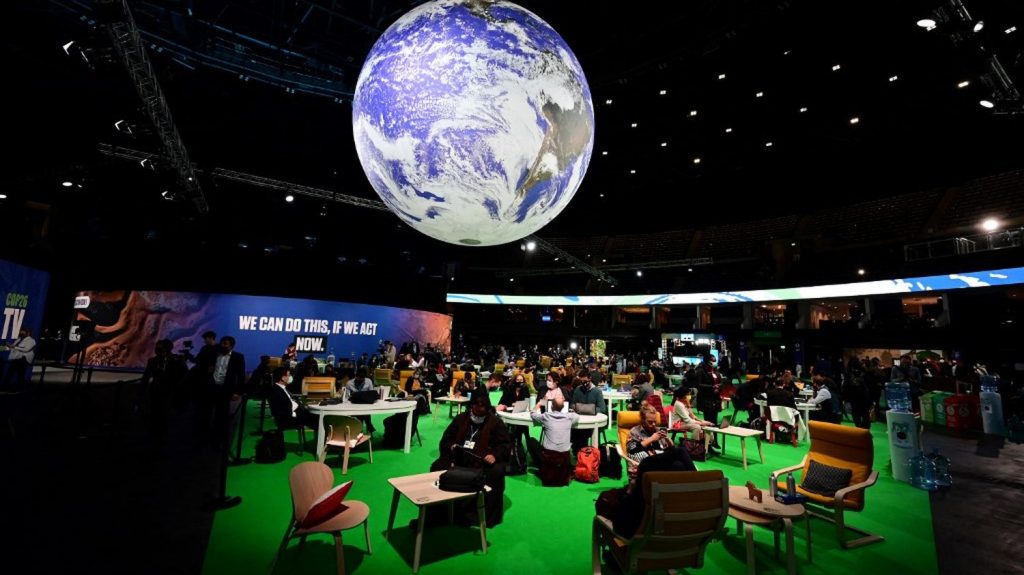
One researcher salutes: “Compared to other conferences, countries have discussed concrete things”
What is the result of COP26? The 196 nations that met for two weeks in Glasgow (Scotland, UK), Saturday 13 November, agreed on a series of final declarations to speed up the fight against global warming. The conference was also marked by several substantive agreements, on deforestation or methane.
>> COP26: Feedback and analysis … catch up on all the news about the end of the conference in Glasgow
To analyze progress and obstacles at this new climate summit, franceinfo interviewed Sandrine Maljian Dubois, director of research at the National Center for Scientific Research at the Center for International and Community Studies and Research (Ceric), an experienced observer of the climate process.
Franceinfo: What do you remember from this COP26?
Sandrine Maljian Dubois : What seems important to me, compared to other COPs, is that the leaders of the planet are starting to discuss concrete things, like the end of fossil fuels [pétrole, charbon, gaz, premières sources de gaz à effet de serre]. This can to appear Mad, but this is the first time these discussions have taken place until the final announcement. The approved formula was indented more than in the first versions of the text, it was slightly disassembled, but the topic is on the table.
Before this summit, you made it clear that you will be very attentive to ambitions to reduce greenhouse gas emissions, which are currently not enough. What is your assessment of this point?
The result is more positive than I could have imagined. The process plays its part, which is certainly not enough, but it is better. Prior to COP21, our commitments led us to 4.5°C, at the same time as COP21, it was 3.5°C. Prior to COP26, we were at 2.7°C. We’ll have to wait to see the ratings but if we end up at 2.2°C or 1.8°C [Le chiffre cité par l’Agence internationale de l’énergie], it will be progress. Especially since in the decision, there is the idea that countries send back a national contribution [l’outil par lequel un Etat annonce ses réductions d’émissions] revised and more ambitious than next year.
After that, there is still a problem artistic work. That strong commitments already made is the first condition, and the second is implementation. From this point of view, we are not there, even if during this COP we start discussing the end of fossil fuels.
During this COP, several parallel agreements were announced, outside the traditional process, such as methane or deforestation. What is its value?
We can read them as political commitments that are not really binding and not monitored, and that is the case. But in the end, I find it instilled ambition in the entire COP, so it’s a positive. The final decision reflects this, for example methane. They made it possible to go into the power options, to make the process more realistic. There is no control, but states should be accountable to their public opinion, this locks things in place.
What are the problematic points of COP26?
I haven’t yet seen the decision on Article 6, related to carbon markets, which could be problematic. As for the rest, I get the impression it’s a well-balanced package that advances in all subjects. Nobody is happy, but it’s a good sign, it means we’ve come to a compromise. Regarding funding, however, this is not satisfactory for the countries of the South, but discussions will continue.
Many countries and NGOs regret the decision on loss and damage. Can you explain this point?
This topic returns from COP to COP and becomes a tricky point. Mitigation is the reduction of greenhouse gas emissions. Adaptation is measures of adaptation to climate change. Loss and damage are presented as another component, although it can be seen as part of adaptation.
It started with the desire of the Pacific Island nations, who wanted some kind of window that would allow emergency and long-term assistance, with respect to all of the slow climate consequences such as rising sea levels. Nordic countries resisted and resisted and finally entered the texts in 2010. The more climate change becomes a reality the more the question increases. There, the reference to “facilitation” was introduced into the texts to a financial mechanism, and then it was replaced by the word “dialogue”. It is clear that the matter is different for the countries of the South: the matter is still postponed.
Many media outlets presented this COP as a “last chance”. Do you share this view of things?
I think it is dangerous. We’ve been repeating this since Copenhagen in 2009, so it’s somewhat counterproductive. The COP wasn’t the ‘weak hope’, but there were high expectations.
A new COP will be organized in 2022. What are the risks?
With this Glasgow COP, the guide to the Paris Agreement will be complete. What process will be used now? To see if states are living up to their commitments, thanks to the transparency framework and to keep pushing for higher ambition. This list will be for the next COP, and then the one that follows.

“Unapologetic pop culture trailblazer. Freelance troublemaker. Food guru. Alcohol fanatic. Gamer. Explorer. Thinker.”
